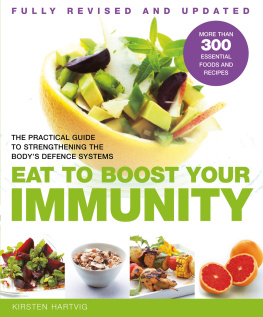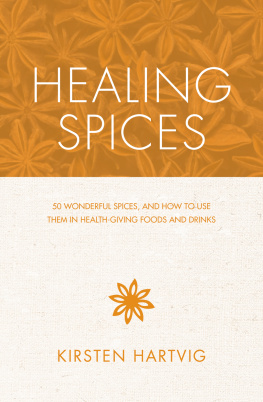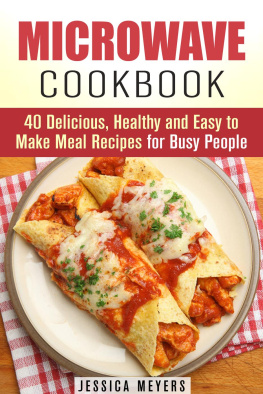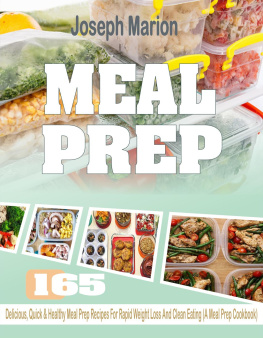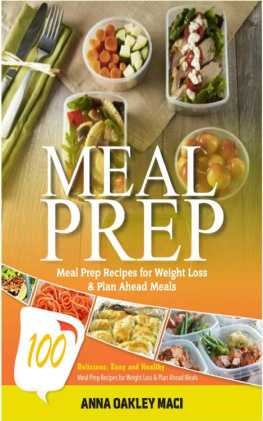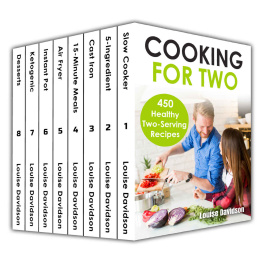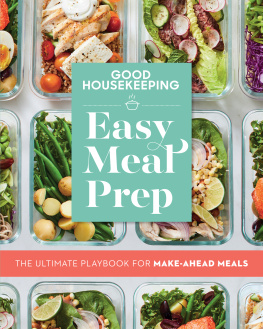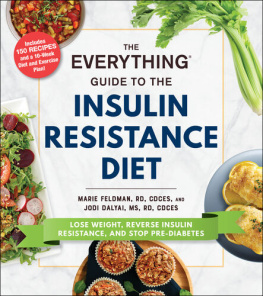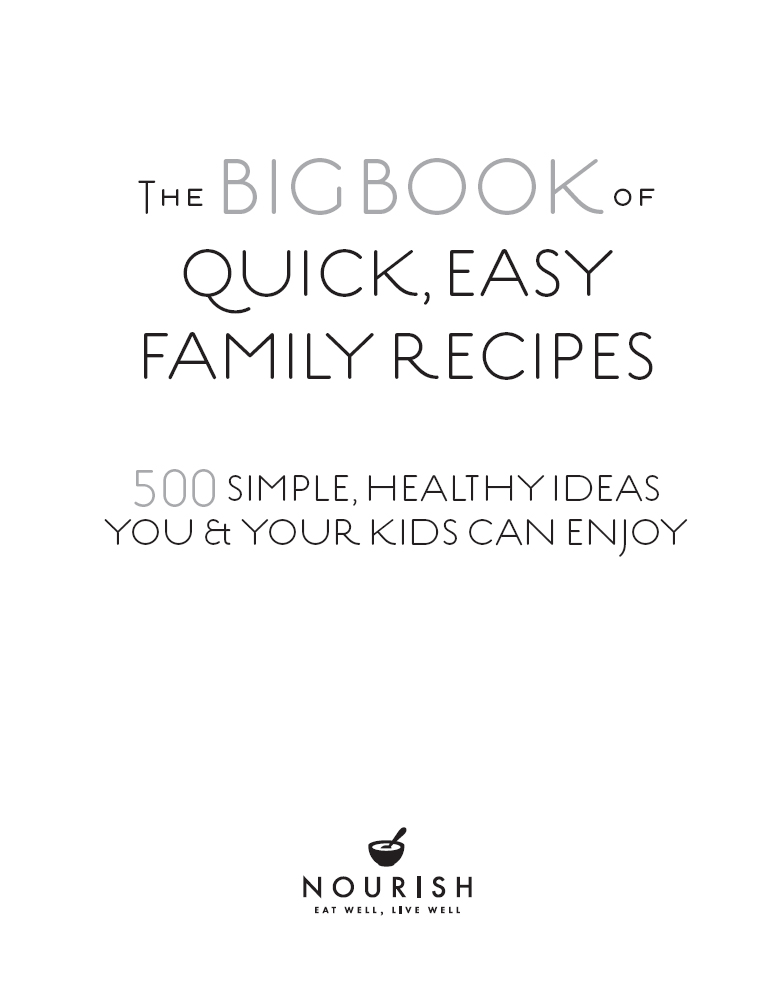THE BIG BOOK OF QUICK, EASY FAMILY RECIPES Gemini Adams, Christine Bailey, Nicola Graimes and Charlotte Watts First published in the UK and USA in 2019 by Nourish, an imprint of Watkins Media Limited Unit 11, Shepperton House, 8393 Shepperton Road London N1 3DF Recipes in this book have been previously published
in the following volumes:
The Top 100 Recipes for Brainy Kids by Christine Bailey
The Top 100 Recipes for Happy Kids by Charlotte Watts and Gemini Adams
The Top 100 Recipes for a Healthy Lunchbox by Nicola Graimes
The Big Book of Quick and Easy Family Recipes by Kirsten Hartvig Copyright Watkins Media Limited 2019 Text copyright Gemini Adams, Christine Bailey, Nicola Graimes, Kirsten Hartvig and Charlotte
Watts 2019 Photography copyright Watkins Media Limited The right of Gemini Adams, Christine Bailey, Nicola Graimes, Kirsten Hartvig and Charlotte Watts to be identified as the Authors of this text has been asserted in accordance with the Copyright, Designs and Patents Act of 1988. All rights reserved. No part of this book may be reproduced in any form or by any electronic or mechanical means, including information storage and retrieval systems, without permission in writing from the publisher, except by a reviewer who may quote brief passages in a review. A CIP record for this book is available from the British Library ISBN: 978-1-84899-359-4 10 9 8 7 6 5 4 3 2 1 Commissioning Editor: Kate Fox
Managing Editor: Daniel Hurst
Head of Design: Georgina Hewitt
Production: Uzma Taj Typeset in Estilo Colour reproduction by XY Digital
Printed in China
Publishers note While every care has been taken in compiling the recipes for this book, Watkins Media Limited, or any other persons who have been involved in working on this publication, cannot accept responsibility for any errors or omissions, inadvertent or not, that may be found in the recipes or text, nor for any problems that may arise as a result of preparing one of these recipes. If you are pregnant or breastfeeding or have any special dietary requirements or medical conditions, it is advisable to consult a medical professional before following any of the recipes contained in this book.
The Big Book of Quick, Easy Family Recipes features 500 recipes that are packed with nutrients for a healthy diet, showing you how to create tasty, wholesome meals without spending a lot of money, time or effort.
The Big Book of Quick, Easy Family Recipes features 500 recipes that are packed with nutrients for a healthy diet, showing you how to create tasty, wholesome meals without spending a lot of money, time or effort.
All the recipes have been devised with simplicity and speed in mind, so that even the most hectic of family lives need not be a barrier to eating well. ABOUT THIS BOOK The main aim of this book is to inspire. The majority of the recipes are quick and easy to prepare; others take a little forethought and preparation but can be made in bulk and frozen for future use. Many of the recipes will also keep for a few days in the fridge, allowing you to plan ahead. The emphasis is on good-quality, nutritious fresh food without being too worthy. There are some recipes for sweet desserts and treats, although many are fruit-based and refined sugars have been kept to a minimum.
Its just a case of learning to be sparing with treats if you cut them out completely, they become more tempting. A balanced diet can handle an indulgence every now and then. The recipes have been created to appeal to both adults and children from the age of three. Try to enjoy these recipes as a family and eat together as often as you can. As for portion sizes, these are averages only, as the size of meals you need to make will obviously differ widely depending on whether you have a picky five-year-old or a ravenous teenager. SPECIAL DIETS With a few simple substitutions many of the recipes in this book that contain meat or dairy can be adjusted to suit a vegetarian or vegan diet.
Tofu and tempeh make great alternatives to meat, cows milk can easily be swapped for a dairy-free alternative, and butter can be replaced with vegetable spread. If your child or another family member is a vegetarian or vegan, has an allergy to nuts or an intolerance of dairy products, eggs, wheat or gluten, you will need to take more care when preparing their meals. The symbols shown below are used throughout the book to indicate which recipes are safe for particular diets. KEY TO SYMBOLS Vegetarian Gluten-free Wheat-free Dairy-free Egg-free Contains Nuts NUTRITION RECOGNIZING THE RIGHT FOODS Use natural, whole foods, comprising fresh produce as much as possible. Whole foods are those that by and large do not come from a packet, but are natural, fresh and preferably organic. Where possible, always choose organic, especially meat and dairy, to expose your family to fewer hormones and antibiotics.
Wash all fruit and vegetables before preparing them. Avoid processed foods, which often have added preservatives and colours, many of which can be harmful to childrens developing bodies. Of course, it is pretty challenging to avoid such products altogether, so try introducing an 80:20 ratio. Aim to use 80 per cent whole foods in your familys diet, allowing 20 per cent for occasional convenience foods. TIPS FOR A HEALTHY BALANCED DIET Make breakfast a priority a proper mealtime rather than a rushed snack. Protein (from eggs, nuts, seeds, yogurt and whole grains) is especially important at breakfast, as it helps to create all the chemicals the body needs to function throughout the day and slows down the release of sugars.
At lunch and dinner, eat plenty of vegetables, fruits, beans and pulses, seeds, nuts and whole grains, such as oats, whole wheat, brown rice, rye and millet. Eat a good mix of dietary protein, including fish, chicken, turkey, bananas, yogurt, eggs, beans, nuts (especially almonds), seeds, quinoa, cottage cheese, avocados and wholegrain crackers. Eat oily fish two or three times a week the essential fatty acids, known as omega-3 oils, that they contain are crucial for childrens brain development and function. Change refined white sources of bread, rice and pasta to wholegrain or brown versions, which have their fibre left intact. Dont have sweets, chocolate, cakes, biscuits and pastries as snacks, but save them for rare treats. Instead, try flapjacks, fruit, savoury snacks, and healthy nut-and-seed bars, which cause fewer energy highs and lows.
Drink plenty of fluids every day, but reduce sugary drinks and sodas. Try diluted fruit juices, natural smoothies or, preferably, water. Keep desserts free from added sugar and eat slow sugar-release fruits peaches, blackberries, blueberries, raspberries, plums, strawberries, apricots (fresh and dried), figs, apples, pineapple (fresh), cherries, oranges, melon and watermelon. A BALANCED PLATE A nutritionally balanced meal should feature one or more items from each of the following food groups. FRUIT AND VEG The more colouful and varied, the better. DAIRY Good sources of calcium are vital, but can be high in saturated fat, so use in moderation.
Choose from: cheeses (lower-fat cream or hard cheeses, Quark, mozarella, feta); yogurt (plain or fromage frais); milk or milk alternatives. PROTEIN Lean, cooked chicken, turkey or beef; fish and seafood (especially oily fish such as herring, salmon, trout and mackerel); eggs; nuts, nut butters and seeds; beans, pulses and hummus; vegetarian sausages and nut cutlets; tofu. STARCHY CARBS Wholegrain bread, rice, pasta and noodles; potatoes; grains (quinoa or bulgur wheat). FATS Small amounts of healthier oils (such as olive oil) and unsaturated fats should be used for cooking and in dressings or spreads. SHOPPING AND PLANNING AHEAD A little forethought makes preparing meals so much easier. Not only does it relieve the daily panic of what to serve, but it also makes the weekly shop more straightforward.


